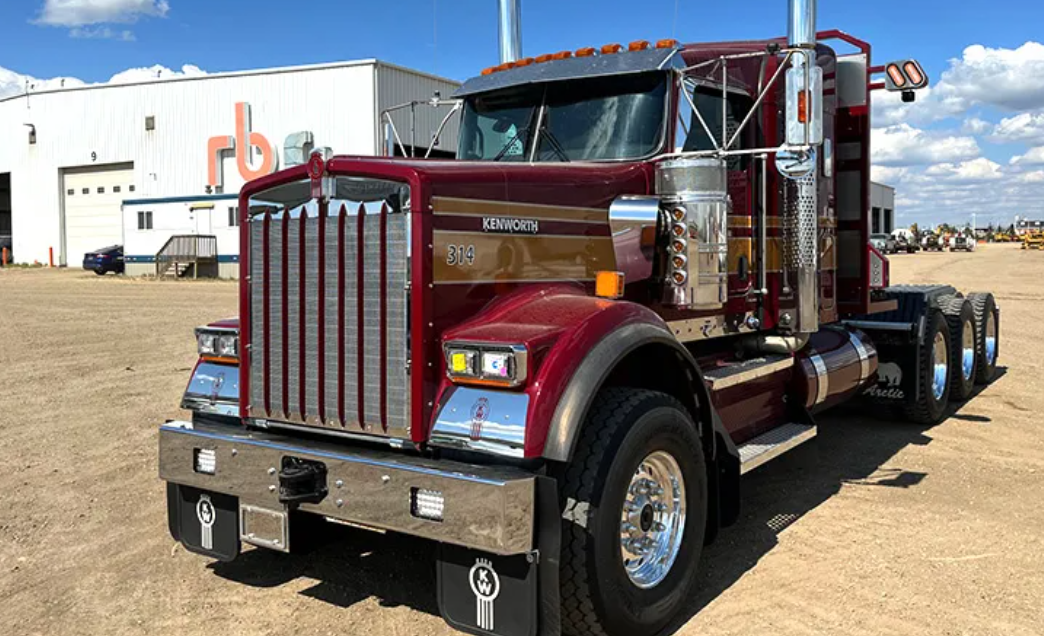Trucking and Violent Crime
Share this Article:
Notable Cases

Overview
Trucking is generally a lawful profession, but there have been numerous documented cases of truck drivers involved in violent crimes. In fact, the FBI has identified a disturbing pattern of homicides linked to the trucking industry. Since 2004, the FBI’s Highway Serial Killings Initiative has catalogued over 750 murder victims found along U.S. highways and nearly 450 potential suspects – many of them long-haul truck drivers. These crimes often involve victims such as hitchhikers or sex workers at truck stops, who are picked up, murdered, and dumped far from the crime scene. While the vast majority of truckers are law-abiding, the FBI notes that a small subset have exploited the mobility of trucking to become serial predators – a trend law enforcement can no longer ignore.
Serial Killers in the Trucking Industry
A number of American serial killers have worked as truck drivers, using their travel routes to find victims and evade detection across multiple jurisdictions. Here are some notable cases, both historical and recent:
- Robert Ben Rhoades (“Truck Stop Killer”) – A long-haul trucker who converted his cab into a torture chamber. In 1990, an Arizona state trooper discovered a naked woman chained inside Rhoades’s truck during a routine stop. She had been tortured, and Rhoades later admitted to murdering multiple victims, including a hitchhiking newlywed couple and a 14-year-old girl(telegraph.co.uk). Rhoades is serving life in prison for these sadistic crimes.
- Keith Hunter Jesperson (“Happy Face Killer”) – A Canadian-American truck driver who killed at least eight women in the early 1990s while crisscrossing the U.S. Jesperson found many of his victims at truck stops and rest areas along his routes(biography.com)
. He raped and strangled women during long-haul trips, and famously drew smiley faces in letters to the media to take credit for the murders. Jesperson was eventually caught in 1995 and is serving multiple life sentences
Bruce Mendenhall – An Illinois trucker arrested in 2007 after a prostitute was found murdered at a Nashville truck stop. When police stopped Mendenhall’s rig, they discovered bloody clothes, a cellphone, and an ATM card belonging to another missing woman inside his cab. Over the following years, he was linked to multiple killings of women at truck stops. As of 2025, Mendenhall (dubbed the “Truck Stop Serial Killer”) has been convicted of three murders in Tennessee and Indiana, and remains a suspect in other homicides across several states.
- Cold Case Truckers – Ongoing investigations continue to implicate former truck drivers in old murder cases. In 2020, for example, Clark Perry Baldwin, a long-haul trucker from Iowa, was charged after DNA evidence linked him to the murders of three women in the early 1990s, with victims’ bodies dumped in Wyoming and Tennessee. Investigators suspect Baldwin preyed on young women he encountered at truck stops, taking them aboard his truck before assaulting and killing them. Likewise, in 2019, Ohio truck driver Samuel Legg III was arrested and charged in a series of 1990s murders after his DNA matched multiple victims, including a woman strangled behind a Illinois truck stop in 1997 (lakecountyil.gov). These cases show that some trucker-serial killers remained at large for decades until advances in DNA technology finally tied them to their crimes.
Other Violent Incidents Involving Truck Drivers
Not all trucking-related violence involves serial murder. There have also been one-time conflicts, road rage incidents, and other violent acts connected to truckers. Some examples include:
- Highway Road Rage: Truck drivers have been involved in deadly road rage confrontations on American highways. In January 2025, a clash between two semi-truck drivers on I-295 in Virginia ended with one trucker fatally shooting the other after a collision (cdllife.com). According to police, the suspect driver sideswiped the victim’s rig, forced it off the road, then pulled alongside and fired multiple shots into the cab, killing the 58-year-old driver. This extreme incident highlights how anger on the road can escalate into violence.
- Kidnapping and Assault: Some truckers have committed violent crimes against individuals they lure into their vehicles. A notorious example is Timothy Jay Vafeades, dubbed the “Vampire Trucker,” who in the early 2010s held women captive in his semi-trailer for months. Vafeades brutally beat and sexually assaulted his victims daily while driving cross-country, effectively keeping them as sex slaves in his truck. In one case, he trapped a woman after inviting her to dinner and then refusing to let her out of the truck, telling her “I got you now. You are mine”. Vafeades was arrested in 2013 and later sentenced to 20 years in federal prison for these crimes (kutv.com).
- Spree Killings: There have been instances of truck drivers committing multiple violent acts in a short time frame (not over years like a typical serial killer). For example, in July 2007 trucker Adam Leroy Lane went on a violent spree across the Northeast. Nicknamed the “Highway Killer,” Lane prowled residential areas near interstate highways and broke into homes to attack his victims, killing at least two women and stabbing others before he was caught en.wikipedia.org. Lane carried knives and even a horror movie about serial murder in his truck, and was only stopped when one intended victim’s family managed to subdue him during an attack. He is now serving a life sentence.
- Trucking Labor Conflicts: Historically, the trucking industry has seen violence during labor disputes and strikes. In the 1970s, independent truckers protesting fuel prices sometimes resorted to violent tactics against those who didn’t join strikes. During the 1973–74 trucker strikes, for instance, there were reports of trucks being shot at by snipers for breaking picket lines, and the unrest resulted in several deaths and nationwide supply disruptions. Similar turmoil erupted in 1979 with sporadic highway violence until National Guard units were deployed. These incidents underscore that trucking-related violence can also stem from organized conflict and rivalry, not only individual crimes.
Patterns and Contributing Factors
Mobility and Anonymity: A common thread in many trucking-related violent crimes is the geographic mobility of the offenders. Long-haul truckers travel thousands of miles, often crossing multiple state lines in a day. This mobility makes it easier for a criminal to commit a violent act in one location and be hundreds of miles away by the time the crime is discovered. It also spreads investigations across different jurisdictions. As one prosecutor noted when discussing an accused trucker-serial killer, trucking “is an occupation that would make it easier to hide your actions… If you are gone all the time from home you won’t raise any suspicion” with family or local communities. The victims in these cases frequently have no personal link to the location where their bodies are found, complicating police work. These factors mean a truck driver with criminal intent can be exceptionally hard to catch, prompting the FBI to systematically help connect highway murder cases.
Victim Availability: The lifestyle of truck drivers brings them into contact with vulnerable travelers and workers. Many long-haul routes involve stops at all-night gas stations, rest areas, and truck stops where prostitutes (“lot lizards”) and hitchhikers may be seeking rides or business. Tragically, this has made such individuals targets for predatory truckers. FBI analysts found that a majority of victims in the highway serial cases were women living transient, high-risk lifestyles – often picked up at truck stops – before being assaulted and killed. The isolation of highway rest stops means there are typically few witnesses. This pattern of victim selection is evident in cases like those of Jesperson, Mendenhall, and Baldwin, all of whom found victims along their routes. It also contributes to why their crimes went undetected for so long; victims from marginalized groups (such as sex workers or runaways) sometimes receive less urgent attention from authorities, allowing killers to offend repeatedly before getting caught (people.com).
Stress and Road Rage: Violent incidents like roadway assaults can stem from the stresses of the trucking job. Truck drivers endure long hours, tight delivery deadlines, and often frustrating traffic conditions. These pressures can occasionally boil over into aggression. Industry observers note that being behind schedule or chronically fatigued are key triggers for truck driver anger and reckless behavior. Exhausted or anxious drivers may be more prone to engage in fights with other motorists. In extreme cases (like the 2025 I-295 shooting), a minor collision or perceived slight on the road can escalate rapidly when a driver is armed or confrontational. The fact that many truckers carry firearms for personal protection adds a dangerous element if a dispute turns violent. Training and safety groups have urged drivers to de-escalate conflicts and recognize the difference between routine aggressive driving and actual road rage with intent to harm (buckrogerslaw.com).
Opportunity and Personality Factors: Some experts have pointed out that the trucking profession might attract or enable individuals with predatory tendencies because it provides freedom of movement and solitude. If a person has violent impulses, the job’s lack of direct supervision and the constant change of location can lower the risk of detection. Criminologists have even remarked that if there is an “ideal” profession for a serial killer, long-haul trucking might be it. Serial offenders like Rhoades and Jesperson clearly took advantage of their trucking jobs to offend repeatedly across state lines. On the other hand, it’s important to remember these individuals are rare exceptions. There are over 3.5 million truck drivers in the U.S., and the overwhelming majority never commit such crimes (fbi.gov). Those that do often have prior histories of violence or psychological issues that converge with the opportunities the job presents.
Final Thoughts
Violent crimes involving truck drivers span a spectrum from isolated road rage incidents to cross-country serial murder sprees. Historically, truckers have been both perpetrators and occasionally victims of violence (as seen in the deadly strike disputes of the 1970s). The common denominators in many of these cases are the unique conditions of life on the road – the solitude, mobility, and frequent encounters with strangers. Law enforcement has become increasingly aware of these patterns. Initiatives like the FBI’s Highway Serial Killings Initiative and improvements in DNA technology have begun to crack long-unsolved cases, bringing trucker killers to justice. The trucking industry, for its part, has worked to improve safety at truck stops and educate drivers on avoiding confrontations. Understanding the trends in trucking-related violence can help authorities and the industry take proactive measures, while also dispelling any notion that all truck drivers should be viewed with suspicion. The cases of violent truckers are chilling, but they remain a small subset of an otherwise vital profession. Increased awareness, better data sharing between jurisdictions, and support for drivers (to manage stress and stay safe) are all key to reducing the rare but serious incidents of violence associated with trucking in the United States.
If you are not a violent serial killer and if you are a decent person, please consider driving for Bloom. Here at Bloom Services, we are 100% OTR trucking. While you won’t find us on a virtual billboard in a simulator, we do offer newer trucks, and cover trailer and cargo liability. We do not pay based on mileage, rather we pay 80% gross load. This is beneficial for strong drivers with a decent work ethic, you will earn based on the actual load rather than mere miles. Our drivers average $3,000 plus a week take home pay after all expenses, like fuel, truck rent, etc. If you have Grit, and the endurance to consistently deliver loads and run for at least three weeks at a time, you can take home $150K a year. If you are interested, apply now.



